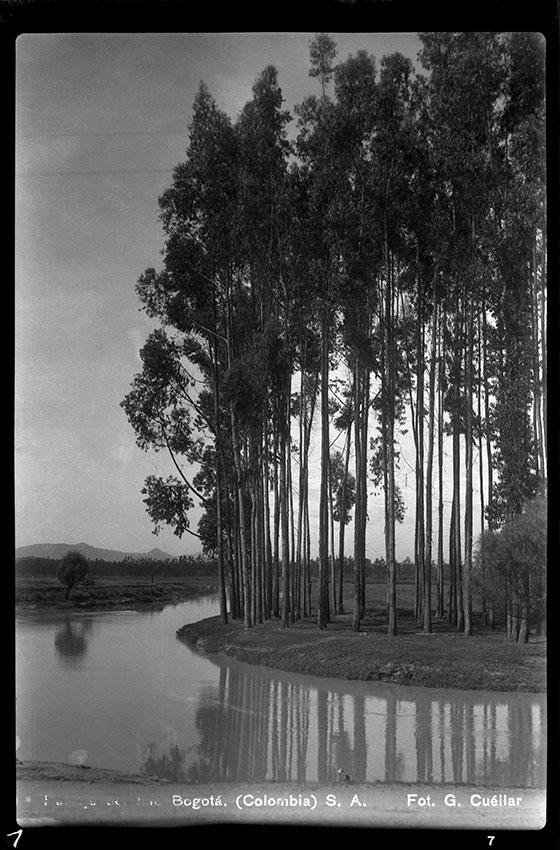Glen Canyon Dam
Despite preventing the dam in Echo National Park, the Sierra Club failed to recognize the scenic, historic, and ecological value of Glen Canyon. This mistake boosted the modern environmental movement.
Despite preventing the dam in Echo National Park, the Sierra Club failed to recognize the scenic, historic, and ecological value of Glen Canyon. This mistake boosted the modern environmental movement.

Paisaje del Río Bogotá (Colombia) S.A. The landscape of the Bogotá River. One of the riverbanks is planted entirely with eucalyptus. (Photograph by Gumersindo Cuéllar Jiménez. © Biblioteca Luis Ángel Arango.)
Paisaje del Río Bogotá (Colombia) S.A. The landscape of the Bogotá River. One of the riverbanks is planted entirely with eucalyptus. (Photograph by Gumersindo Cuéllar Jiménez. © Biblioteca Luis Ángel Arango.)
© Biblioteca Luis Ángel Arango. Banco de la República de Colombia. Courtesy of Mario Cuéllar Bobadilla. Collection Gumersindo Cuéllar Jiménez, Reference FT1676 brblaa791800-3.
The copyright holder reserves, or holds for their own use, all the rights provided by copyright law, such as distribution, performance, and creation of derivative works.
The pollution of the Cuyahoga River was so severe that over the years the toxic waste caught fire numerous times. One specific fire in 1969 was reported upon by the Time Magazine and played a strong part in the movement towards cleansing the waterways nationwide.
The Sydney Tar Ponds are a huge waste site in Nova Scotia, Canada that contains large amounts of toxic chemicals. The ponds formed in a river mouth, where steel corporations let their largely coal-based pollutants and sludge drain off for many decades.
Beginning in the pre-modern world, the Volga and Mississippi Rivers both served as critical trade routes connecting cultures in an extensive exchange network, while also sustaining populations through their surrounding wetlands and bottomlands. In modern times, “Mother Volga” and the “Father of Waters” became integral parts of national identity, contributing to a sense of Russian and American exceptionalism. Rivers, Memory, and Nation-Building discusses their histories, through which we derive a more nuanced view of human interaction with the environment, which adds another lens to our understanding of the past.
Wild Earth 13, no. 4, focuses on the National Wildlife Refuge System with essays on its history, the wildlife refuge in Southeastern Oregon, wildlands ofthe Great Plains, and pronghorn extinction in the Sonoran Desert.
Wild Earth 14, no. 3/4, is the last issue of the Wild Earth Journal. It presents essays on connectivity and long-distance migration in human-fragmented landscapes, the Great Bear Rainforest archipelago, and rewilding Patagonia.
In Wild Earth 5, no. 3 Wendell Berry writes about private property and the Commonwealth, Thomas P. Rooney reflects on global warming, and Paul J. Kalisz analyses sustainable silviculture in the hardwood forests of the eastern United States.
Fresh Kills Landfill in Staten Island, New York, was the subject of a struggle over where to dispose of the waste of a city strapped for space. While the landfill was closed in 2001, the events of 9/11 and the need to clear the large amounts of rubble and human remains from the site of the Twin Towers attack turned Fresh Kills into hallowed ground, which posed new questions about the future of the site.